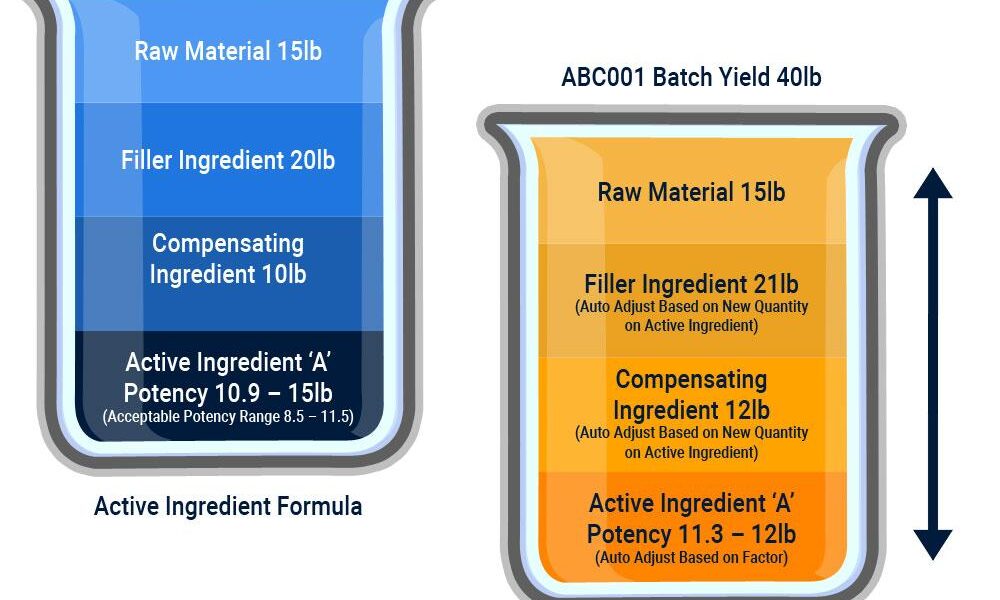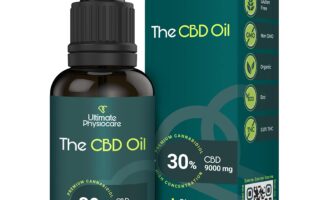In the ever-evolving landscape of cannabis research, one term has emerged at the forefront of discussion: the active ingredient. Often shrouded in mystery, these compounds play a pivotal role in the effects of marijuana, influencing everything from relief for chronic pain to enhancement of mood. As society’s understanding of cannabis deepens, so too does our curiosity about the specific constituents that underpin its properties. This article delves into the most significant active ingredients in marijuana, exploring their unique characteristics, therapeutic potentials, and the intricate dance they perform within the body. Join us on a journey through the fascinating world of cannabinoids, terpenes, and beyond, as we uncover the science behind this ancient plant and its modern-day applications.
Table of Contents
- Exploring the Science Behind Cannabinoids
- Understanding THC and CBD: Benefits and Differences
- Navigating the World of Terpenes: Aromatic Compounds and Their Effects
- Choosing the Right Products: Tips for Safe and Effective Use
- Q&A
- In Conclusion
Exploring the Science Behind Cannabinoids
The intricate world of cannabinoids reveals a fascinating interplay between chemistry and biology, opening the door to a deeper understanding of how these compounds affect the human body. Cannabinoids are a group of active compounds found in the cannabis plant, with THC and CBD being the most recognized. As they interact with the endocannabinoid system, they influence various physiological processes. This complex network affects everything from mood regulation to pain perception, making cannabinoids significant players in both medicinal and recreational contexts.
Research has identified several distinct cannabinoids, each with its unique properties and potential benefits. Consider the following key players:
- THC (Tetrahydrocannabinol): The primary psychoactive component that induces the “high” sensation.
- CBD (Cannabidiol): Known for its therapeutic effects without the psychoactive properties.
- CBG (Cannabigerol): Often referred to as the “mother of all cannabinoids,” with potential anti-inflammatory effects.
- CBN (Cannabinol): Known for its potential sedative effects, especially in older cannabis strains.
- THCA (Tetrahydrocannabinolic Acid): The non-psychoactive precursor to THC, offering anti-inflammatory properties.
| Cannabinoid | Primary Effects |
|---|---|
| THC | Psychoactive, euphoria, pain relief |
| CBD | Anti-anxiety, anti-inflammatory, seizure reduction |
| CBG | Anti-inflammatory, neuroprotective |
| CBN | Potential sedative, appetite stimulation |
| THCA | Anti-inflammatory, non-psychoactive |
Understanding THC and CBD: Benefits and Differences
With the growing interest in cannabis, understanding the two most prominent compounds—THC (tetrahydrocannabinol) and CBD (cannabidiol)—is essential to navigating the conversation about their benefits. While both compounds originate from the cannabis plant, they exhibit remarkably different effects on the body and mind. THC is the psychoactive component that produces the “high” commonly associated with marijuana. Its benefits include:
- Pain Relief: THC has been found to alleviate chronic pain and inflammation.
- Appetite Stimulation: Known to increase appetite, often referred to as “the munchies.”
- Sleep Aid: Useful for those struggling with insomnia due to its sedative properties.
On the other hand, CBD is non-psychoactive and is often praised for its therapeutic potential without the altered state of consciousness. Its benefits are diverse, and include:
- Anxiety Reduction: CBD helps reduce anxiety levels in users without the high.
- Neuroprotective Properties: It has shown potential in protecting against neurological disorders.
- Skin Health: Used in skincare for its anti-inflammatory benefits.
| Feature | THC | CBD |
|---|---|---|
| Psychoactive | Yes | No |
| Legal Status | Varies by state/country | Generally more legal |
| Health Effects | Potential for euphoria | Therapeutic benefits |
Navigating the World of Terpenes: Aromatic Compounds and Their Effects
Terpenes are the unsung heroes of the botanical world, offering more than just pleasant aromas. These aromatic compounds, found in various plants, particularly cannabis, play a crucial role in shaping the effects and therapeutic benefits of different strains. Common terpenes include:
- Myrcene: Known for its relaxing and sedative effects, myrcene is often associated with the “couch-lock” phenomenon.
- Limonene: With its citrus scent, limonene is believed to elevate mood and reduce stress.
- Caryophyllene: Unique for its spicy notes, caryophyllene is recognized for its potential anti-inflammatory properties.
Understanding the synergy between terpenes and cannabinoids can enhance the overall experience of consuming cannabis. Each strain’s unique terpene profile contributes to its distinct flavor, aroma, and therapeutic effects. Here’s a quick comparison of some well-known terpenes:
| Terpene | Aroma | Potential Effects |
|---|---|---|
| Myrcene | Earthy, musky | Relaxation, sedation |
| Limonene | Citrusy, lemon | Elevated mood, anxiety relief |
| Caryophyllene | Spicy, peppery | Anti-inflammatory, pain relief |
Choosing the Right Products: Tips for Safe and Effective Use
When exploring the various products derived from marijuana, it’s crucial to consider the active ingredients that contribute to their effects. The primary compounds include THC (tetrahydrocannabinol) and CBD (cannabidiol), each offering different benefits and experiences. Understanding the concentration and balance of these cannabinoids can help you select products tailored to your needs, whether you’re looking for pain relief, anxiety reduction, or recreational enjoyment. A quick comparison can help clarify which products might work best for you:
| Active Ingredient | Primary Effects |
|---|---|
| THC | euphoria, appetite stimulation, pain relief |
| CBD | anti-inflammatory, anxiety reduction, seizure control |
Moreover, consider the form of consumption as an essential factor. For instance, edibles and tinctures provide longer-lasting effects, while vaporizers and smoking can deliver quicker relief. When selecting a product, it’s advisable to research reputable brands, read user reviews, and verify third-party lab testing to ensure quality and safety. Keeping track of your experiences with different products can also enhance your understanding and help you make informed choices in the future.
Q&A
Q&A: Understanding the Active Ingredient in Marijuana
Q: What is the primary active ingredient found in marijuana?
A: The primary active ingredient in marijuana is tetrahydrocannabinol, more commonly known as THC. This compound is primarily responsible for the psychoactive effects often associated with cannabis use.
Q: Can you explain what THC does in the body?
A: Certainly! When consumed, THC interacts with the body’s endocannabinoid system, particularly binding to CB1 receptors in the brain. This interaction can produce a variety of effects, including euphoria, altered senses, and even changes in mood and memory. It’s this engagement with the brain’s chemistry that contributes to the popular recreational and medicinal uses of marijuana.
Q: Are there other important compounds in marijuana besides THC?
A: Yes, indeed! While THC often steals the spotlight, marijuana contains over 100 other cannabinoids, with cannabidiol (CBD) being the second most prevalent. Unlike THC, CBD is non-psychoactive and is associated with various therapeutic benefits, such as anxiety relief and pain reduction. The unique interplay of these cannabinoids, along with terpenes—aromatic compounds contributing to the plant’s scent and flavor—creates the “entourage effect,” enhancing the overall effects of the cannabis plant.
Q: How is THC metabolized in the body?
A: Once THC enters the body, it undergoes metabolism primarily in the liver. The liver converts THC into several metabolites, including 11-hydroxy-THC, which can be significantly more potent. This metabolic process affects how long the effects are felt and can vary greatly depending on various factors, such as the method of consumption (smoking, edibles, etc.) and individual body chemistry.
Q: Are there any medicinal benefits associated with THC?
A: Yes, THC has been studied for its potential medicinal benefits. It may help alleviate symptoms such as chronic pain, nausea (especially in patients undergoing chemotherapy), and appetite loss in conditions like HIV/AIDS. However, its psychoactive effects can limit its use and appeal in certain situations, necessitating the careful consideration of dosage and consumption method.
Q: Is it possible to have negative side effects when consuming THC?
A: Absolutely. While many people enjoy THC for its pleasurable effects, some may experience adverse reactions, particularly at higher doses. Potential side effects include anxiety, paranoia, dizziness, and impaired motor skills. Therefore, moderation and awareness of individual tolerance levels are key to a positive experience.
Q: How do different strains of marijuana affect THC levels?
A: The THC content can vary significantly between different strains of marijuana. Breeders have cultivated strains to emphasize various cannabinoids, resulting in some varieties boasting high THC concentrations while others have balanced ratios or predominately higher CBD levels. It’s always wise for users to check strain specifics to align their choice with their desired effects.
Q: What should someone new to marijuana know about THC?
A: For beginners, starting with a low dose is crucial. Understanding that different methods of consumption will yield varied onset times and intensities can help. For instance, edibles take longer to affect and may produce stronger sensations compared to smoking. Additionally, being in a comfortable environment and consuming with trusted friends can enhance the experience and mitigate any potential anxiety.
Remember: while THC can offer remarkable effects, it’s essential to approach cannabis consumption with knowledge and responsibility. Always research, consult with professionals, and prioritize safety in your marijuana journey.
In Conclusion
As we conclude our exploration of the active ingredients in marijuana, it’s clear that this complex plant holds both promise and challenges within its intricate chemical tapestry. From the well-known THC that elicits powerful psychoactive effects to the calming embrace of CBD, each compound contributes to the multifaceted experience of cannabis. The ongoing research continues to unveil the layers of these active ingredients, revealing potential therapeutic benefits and inspiring curiosity across medical, recreational, and scientific communities alike. As we navigate the evolving landscape of cannabis, understanding these active components not only enriches our knowledge but also invites informed discussions about their role in our lives. Whether you’re a seasoned user or a curious newcomer, the journey into the world of marijuana’s active ingredients is just beginning, and its story is far from over. Thank you for joining us on this enlightening expedition.



